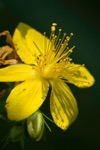Notice (8): Undefined index: geoplugin_countryCode [APP/Controller/AppController.php, line 94]Code Context$Country_code = '';if($ip_data && $ip_data['geoplugin_countryCode'] != null) {$Country_code = $ip_data['geoplugin_countryCode'];$client = null $forward = null $remote = '216.73.216.46' $ip = '216.73.216.46' $ch = unknown $ip_data_in = '{ "geoplugin_status":403, "geoplugin_message": "geoPlugin API is no longer available for free use. To continue access, please upgrade to a paid plan", "geoplugin_url": "https://www.geoplugin.com/subscription" } ' $ip_data = [ 'geoplugin_status' => '403', 'geoplugin_message' => 'geoPlugin API is no longer available for free use. To continue access, please upgrade to a paid plan', 'geoplugin_url' => 'https://www.geoplugin.com/subscription' ] $Country_code = ''App\Controller\AppController::initialize() - APP/Controller/AppController.php, line 94 App\Controller\ProductsController::initialize() - APP/Controller/ProductsController.php, line 31 Cake\Controller\Controller::__construct() - CORE/src/Controller/Controller.php, line 273 ReflectionClass::newInstance() - [internal], line ?? Cake\Http\ControllerFactory::create() - CORE/src/Http/ControllerFactory.php, line 47 Cake\Http\ActionDispatcher::dispatch() - CORE/src/Http/ActionDispatcher.php, line 91 Cake\Http\BaseApplication::__invoke() - CORE/src/Http/BaseApplication.php, line 235 Cake\Http\Runner::__invoke() - CORE/src/Http/Runner.php, line 65 Cake\Http\Runner::__invoke() - CORE/src/Http/Runner.php, line 65 Cake\Http\Middleware\CsrfProtectionMiddleware::__invoke() - CORE/src/Http/Middleware/CsrfProtectionMiddleware.php, line 104 Cake\Http\Runner::__invoke() - CORE/src/Http/Runner.php, line 65 Cake\Http\Runner::run() - CORE/src/Http/Runner.php, line 51 Cake\Routing\Middleware\RoutingMiddleware::__invoke() - CORE/src/Routing/Middleware/RoutingMiddleware.php, line 168 Cake\Http\Runner::__invoke() - CORE/src/Http/Runner.php, line 65 Cake\Routing\Middleware\AssetMiddleware::__invoke() - CORE/src/Routing/Middleware/AssetMiddleware.php, line 88 Cake\Http\Runner::__invoke() - CORE/src/Http/Runner.php, line 65 Cake\Error\Middleware\ErrorHandlerMiddleware::__invoke() - CORE/src/Error/Middleware/ErrorHandlerMiddleware.php, line 96
| Scientific: | Hypericum perforatum |
|---|---|
| Other: | St. John's Wort |
| Family: | Hypericaceae |
St. John's Wort (SJW) received its names because it blooms around around the summer soulstice which falls on St. John the Baptists' birthday.
In herbal medicine the SJW is used as a nervine and sedative to treat a variety of conditions associated with the nervous system. It has been used as an antidepressant to relieve melancholy and improve moods. Research supports the use of SJW for mild, moderate and possibly even severe depression. The main active ingredient, hyperforin, has many effects on the nervous system including inhibiting the reuptake of several neutransmitters associated with mood (e.g. serotonin, dopamine and GABA).
Historically it was also used internally and externally for nerve pain (e.g. neuropathy, sciatica, etc) but this indication has not been researched. Clinical trials have shown promise for some female complaints including premenstrual sydrome (PMS) and menopausal hot flashes.
SJW is a useful antiinflammatory and vulnerary herb in the topical treatment of superficial wounds (e.g. surgical wounds and burns) but also for eczema and psoriasis. Caution: it acts as a photosensitizer and can increase the risk of sunburn.
CNS
• mood disorders
- depression (mild to severe)
- anxiety
- obsessive-compulsive disorder (OCD)
- generalized anxiety disorder (GAD)
- seasonal affective disorder (SAD)
• nervous exhaustion
• alcohol dependence
• neuropathic pain (traditional use)
- sciatica
- neuropathy
• premenstrual syndrome (PMS)
Infection
• bacterial infection (traditional use)
• viral infection (enveloped viruses, traditional use)
• cold sores (topical application)
• herpes simplex (HSV)
• hepatitis B virus (HBV)
• influenza virus A
• Epstein-Barr virus (EBV) - mononucleosis
• otitis (ear oil)
Note: not effective for non-enveloped viruses
Dermatologic
• various skin lesions
• eczema
• psoriasis
• ulcers
• burns
• sunburns
• chilblains
• wounds
• leg ulcer
Other
• irritable bowel syndrome (IBS)
• menopausal hot flashes
• chronic fatigue syndrome (CFS)
• fibromyalgia
• Antidepressant
• Nervine
• Vulnerary
• Antiviral
• Anxiolytic
• Antiinflammatory
• Antimicrobial
• Hyperforin
• Naphthodianthrones (Hypericin, Pseudohypericin)
• Essential Oils
Hyperforin Has The Most Significant Antidepressant Effects And Inhibits Reuptake Of Monoamines (E.g. Serotonin, Dopamine, And Noradrenaline). It Also Effects Gaba And Glutamate Receptors. Hypericin Works Synergistically By Mildly Inhibiting Mao And Dopamine β -Hydroxylase.
• Tincture (1:5 in 40% EtOH): 2-4 ml tid, then reduce to bid
• Standardized extract (3-5% hyperforin): 300 mg
• Hypericum oil: topical application to skin lesions (e.g. psoriasis) followed by exposure to visible light (e.g. far-red )
Side effects: Photosensitivity (rare).
Drug metabolism • hyperforin and amentoflavone induces cytochrome P450 enzymes (CYP3A4, CYP2C9), which may decrease the efficacy of certain drugs, including HIV antiretroviral drugs.
Barnes J, Anderson LA, Phillipson JD. Herbal Medicines, 3rd ed. London: Pharmaceutical Press, 2007.
Bone K. Principles and Practice of Phytotherapy. Edinburgh: Churchill Livingstone, 2000.
Bone K. A Clinical Guide to Blending Liquid Herbs: Herbal Formulations for the Individual Patient. St Louis, MO: Churchill Livingstone, 2003.
Brinker F. The Toxicology of Botanical Medicines, 3rd ed. Sandy, Oregon: Eclectic Medical Publications, 2000.
Felter HW, Lloyd JU. King's American Dispensatory. 1898. http://www.ibiblio.org/herbmed/eclectic/kings/main.html. Accessed: August 19, 2006.
Hoffman D. Medical Herbalism. Rochester, Vermont: Healing Arts Press, 2003.
Weiss RF. Herbal Medicine. Beaconsfield, England: Beaconsfield Publishers Ltd, 1988.
Williamson EM, ed. Major Herbs of Ayurveda. Edinburgh: Churchill Livingstone, 2002
Disclaimer: This content is subject to change. The information is intended to inform and educate; it does not replace the medical evaluation, advice, diagnosis or treatment by a healthcare professional. www.nhpassist.com © 2014 NDAssist Inc. and/or its affiliates. All rights reserved.

|
St. John's Wort
SummarySt. John's Wort (SJW) received its names because it blooms around around the summer soulstice which falls on St. John the Baptists' birthday. IndicationsSign in requiredActionsSign in requiredConstituentsSign in requiredPosologySign in requiredSafetySign in requiredInteractionsSign in requiredReferencesSign in required |
|---|